
CATALYSIS COMMUNICATIONS
Scope & Guideline
Uniting Experts in the Quest for Catalytic Excellence
Introduction
Aims and Scopes
- Catalytic Materials Development:
Research concerning the synthesis and characterization of novel catalysts, including nanoparticles, zeolites, and metal-organic frameworks (MOFs), aimed at optimizing their catalytic performance. - Environmental and Green Catalysis:
Investigation of catalysts and processes that promote sustainability, such as photocatalytic degradation of pollutants, biomass conversion, and CO2 reduction. - Heterogeneous and Homogeneous Catalysis:
Studies that explore both heterogeneous and homogeneous catalytic systems, including their mechanisms, efficiencies, and applications in various chemical reactions. - Biomass and Renewable Resources:
Research focused on the conversion of biomass into valuable chemicals and fuels, highlighting the use of catalysts to enhance efficiency and selectivity in these processes. - Electrocatalysis and Photocatalysis:
Exploration of catalysts that facilitate electrochemical reactions and light-driven processes, including hydrogen evolution and CO2 reduction.
Trending and Emerging
- Sustainable and Green Catalysis:
There is a notable increase in research focusing on sustainable catalytic processes, including biomass conversion, CO2 utilization, and environmentally friendly synthetic methods. - Nanocatalysts and Advanced Materials:
The development and application of nanostructured catalysts are trending, with researchers exploring their enhanced properties and efficiencies in various catalytic reactions. - Integrated Catalytic Systems:
Emerging interest in integrated systems that combine multiple catalytic functions or processes, such as tandem reactions and hybrid catalytic approaches, showcasing their potential for improved efficiency. - Electrocatalysis and Renewable Energy Applications:
Research in electrocatalysis, particularly for hydrogen production and CO2 reduction, is on the rise, driven by the demand for renewable energy solutions and sustainable chemical processes. - Machine Learning and Computational Catalysis:
The application of machine learning and computational methods to predict catalytic activity and optimize catalyst design is gaining momentum, reflecting a shift towards data-driven approaches in catalysis research.
Declining or Waning
- Traditional Catalysis without Sustainable Focus:
Research focused solely on traditional catalytic processes without consideration for environmental impact or sustainability is becoming less prevalent, as the field moves towards greener methodologies. - Conventional Metal Catalysts:
The emphasis on traditional metal catalysts without innovative modifications or sustainable practices is waning, as researchers increasingly explore alternative materials and methods. - Static Catalysis Studies:
Studies that do not incorporate dynamic or real-time analysis of catalytic processes are seeing a decline, as there is a growing preference for research that utilizes in situ or operando methodologies. - Narrowly Focused Reaction Mechanisms:
Research that focuses on very specific reaction mechanisms without broader implications or applications is becoming less common, as the journal encourages studies with wider relevance to the field. - Low-Impact Catalytic Applications:
Publications focusing on low-impact or niche catalytic applications are decreasing, as the journal prioritizes research that addresses pressing global challenges, such as energy and environmental sustainability.
Similar Journals
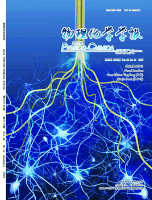
ACTA PHYSICO-CHIMICA SINICA
Elevating knowledge in chemistry through peer-reviewed excellence.ACTA PHYSICO-CHIMICA SINICA, published by PEKING UNIV PRESS, is a prestigious journal focused on the fields of Physical and Theoretical Chemistry, boasting an impressive impact factor as reflected in its 2023 Q1 ranking in this domain, placing it among the top 5% of journals in the subject area. With its origins dating back to 1996, the journal serves as a vital platform for the dissemination of cutting-edge research, encompassing a broad range of topics from molecular dynamics to thermodynamics and quantum chemistry. Researchers, professionals, and students are provided with valuable insights through peer-reviewed articles, making it an indispensable resource for advancing knowledge and sparking innovation in the discipline. While this journal does not offer Open Access options, its rigorous editorial standards and influential contributions continue to shape the landscape of Physical and Theoretical Chemistry globally. For submissions or further information, please refer to the editorial office at Peking University, Chemistry Building, Beijing, China.
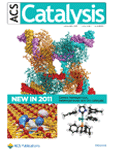
ACS Catalysis
Empowering Research in the Heart of CatalysisACS Catalysis, published by the American Chemical Society, stands as a premier journal in the field of catalysis, offering a vital platform for researchers, professionals, and students focused on advancing the science of catalysis and its applications. With an impressive impact factor placing it in the Q1 category for both Catalysis and Chemistry (miscellaneous), this journal has established itself as a leading source of high-quality research findings, currently ranking #21 out of 408 in General Chemistry and #9 out of 68 in Catalysis according to Scopus. Since its inception in 2011, ACS Catalysis has aimed to publish innovative research that addresses the critical challenges in catalytic processes, advancing our understanding of both fundamental and applied aspects of catalysis. With a commitment to promoting open scientific discourse, it serves a vital role for those interested in the latest methodologies, discoveries, and trends in this essential discipline. Based in Washington, DC, ACS Catalysis continues to uphold the highest standards of scholarship and collaboration within the vibrant community of chemists and engineers worldwide.

RESEARCH ON CHEMICAL INTERMEDIATES
Championing Excellence in Chemical ResearchRESEARCH ON CHEMICAL INTERMEDIATES, published by Springer, is a prestigious academic journal that has been contributing to the field of chemistry since 1984. With an ISSN of 0922-6168 and an E-ISSN of 1568-5675, this journal serves as a vital platform for the dissemination of innovative findings and research advancements related to chemical intermediates. Situated in the Netherlands, it has established a commendable reputation, currently ranked in the Q2 category for miscellaneous chemistry and positioned at #131/408 with a 68th percentile in the Scopus rankings. Though it does not operate under an open-access model, the journal plays a crucial role in connecting scientists, researchers, and practitioners to facilitate a better understanding of synthetic methods, characterizations, and applications of various chemical intermediates. Continually publishing high-quality research until its anticipated convergence in 2024, this journal is an essential resource for those looking to expand their knowledge and contribute to the vibrant community of chemical science.

Nature Catalysis
Exploring the Frontiers of Biochemistry and CatalysisNature Catalysis is a premier academic journal published by NATURE PORTFOLIO, specializing in the rapidly evolving fields of biochemistry, bioengineering, and catalysis. With its ISSN of 2520-1158, this journal has emerged as an invaluable resource since its inception in 2018, contributing significantly to interdisciplinary research. Recognized for its high impact within the scientific community, it holds a prestigious Q1 ranking across multiple categories, including Biochemistry, Process Chemistry and Technology, and Catalysis as of 2023, illustrating its influence and authority in the field. Researchers will find impactful articles characterized by rigorous peer review processes that push the boundaries of knowledge in catalysis and its applications. While the journal operates with traditional access models, it remains accessible to a global audience interested in innovative research findings that promise to shape future developments in these critical areas. Positioned at the forefront of contemporary scientific inquiry, Nature Catalysis invites contributions that expand upon catalytic processes and technologies, which are crucial for advancing both fundamental science and applied engineering.
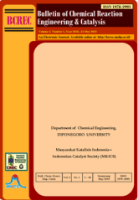
Bulletin of Chemical Reaction Engineering and Catalysis
Exploring Breakthroughs in Chemical Reaction DynamicsBulletin of Chemical Reaction Engineering and Catalysis is a distinguished open-access journal published by UNIV DIPONEGORO, focusing on pivotal advancements in the fields of chemical reaction engineering and catalysis. Since its inception in 2008, this journal has served as a vital platform for disseminating cutting-edge research, catering to a diverse readership that includes researchers, professionals, and students in chemical engineering and related disciplines. With its dedication to publishing valuable insights, the journal has been indexed in Scopus and boasts respectable rankings across various categories, including Q3 in Chemical Engineering (miscellaneous) and Q4 in Catalysis as of 2023. It continues to foster scholarly dialogue and collaboration by providing an accessible means for contributors to share their findings. Operating from Semarang, Indonesia, this journal underscores its commitment to advancing knowledge in chemical sciences, making it an essential resource for those engaged in the study and application of chemical processes.
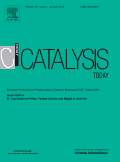
CATALYSIS TODAY
Igniting Innovation in Chemical EngineeringCATALYSIS TODAY is an esteemed journal published by Elsevier, specializing in the vibrant field of catalysis and its applications in chemical engineering. With the ISSN 0920-5861 and E-ISSN 1873-4308, it has continually contributed valuable research since its inception in 1987 and is set to maintain its influence through 2025. Hailing from the Netherlands, this journal stands out with a notable Q2 quartile ranking in catalysis and a Q1 ranking in miscellaneous chemistry as of 2023, reflecting its rigorous selection of impactful and innovative studies. Its Scopus rankings further substantiate its excellence, highlighting its position in the 89th percentile of general chemistry and 77th percentile in catalysis. CATALYSIS TODAY aims to disseminate cutting-edge findings, fostering exchange among researchers, professionals, and students in the catalysis community. By presenting high-quality research articles, reviews, and case studies, it plays a pivotal role in advancing knowledge and sparking discussions that drive future developments in the field.
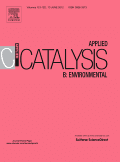
Applied Catalysis B-Environment and Energy
Transforming environmental challenges into innovative solutions.Applied Catalysis B-Environment and Energy, published by Elsevier, is a leading journal in the fields of catalysis, environmental science, and process chemistry, with an impressive impact factor that reflects its significance in advancing research and innovation. Established in 1992, this esteemed journal has earned a prestigious status as evidenced by its 2023 category quartiles—ranking in the Q1 category for Catalysis, Environmental Science, and Process Chemistry and Technology. With consistently high rankings in the Scopus database, it holds a remarkable position as #1 in General Environmental Science and #2 in both Process Chemistry and Catalysis, showcasing its profound impact on the respective fields. The journal’s scope encompasses both theoretical and practical research, targeting the pivotal developments in catalysis that promote sustainable practices and energy efficiency. Researchers, professionals, and students alike will find invaluable insights and cutting-edge studies published within its pages, making it an essential resource for those invested in pioneering advancements for a greener, more energy-efficient future.

CCS Chemistry
Showcasing Excellence in Chemical Science and InnovationCCS Chemistry, published by the esteemed Chinese Chemical Society, is a leading open-access journal dedicated to advancing the field of chemistry. Since its inception in 2019, the journal has rapidly gained recognition, achieving a remarkable impact factor that places it in the prestigious Q1 category in Chemistry (Miscellaneous) as of 2023. With a Scopus ranking of #41 out of 408 in General Chemistry, CCS Chemistry represents the top 10th percentile in its category, reflecting its commitment to high-quality research and innovation. The journal serves as a vital platform for researchers and professionals to share their findings, showcase cutting-edge methodologies, and engage with the latest developments in various chemistry subfields. Accessible to a global audience, CCS Chemistry ensures that groundbreaking research is available without barriers, making it an indispensable resource for students and academics aiming to stay at the forefront of chemical sciences. For further details, submissions, and access to published articles, please visit the journal's website.

TRANSACTIONS OF TIANJIN UNIVERSITY
Connecting scholars to drive impactful research forward.TRANSACTIONS OF TIANJIN UNIVERSITY, published by SpringerNature, is a premier journal in the field of multidisciplinary research, boasting an impressive Q1 ranking and placing within the top 93rd percentile of its category according to Scopus. With an ISSN of 1006-4982 and E-ISSN of 1995-8196, this journal facilitates insightful and innovative contributions that span various disciplines, making it a vital resource for academics and professionals alike. Established in 2004, the journal continues to thrive with a commitment to advancing knowledge and fostering collaboration in scientific inquiry. TRANSACTIONS OF TIANJIN UNIVERSITY aligns with global research trends and offers a platform for the dissemination of high-quality research findings, promoting interdisciplinary approaches to solving complex problems. Located in China, its influence extends well beyond national borders, appealing to a diverse readership eager to explore the latest advancements and discussions in the multidisciplinary arena.
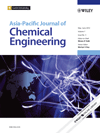
Asia-Pacific Journal of Chemical Engineering
Advancing Knowledge at the Intersection of Chemistry and Sustainability.The Asia-Pacific Journal of Chemical Engineering, published by WILEY, serves as a vital forum for the dissemination of innovative research in the interdisciplinary domains of chemical engineering, renewable energy, sustainability, and waste management. Established in 2006, this esteemed journal has achieved a notable impact factor that reflects its commitment to advancing knowledge and practices within the chemical engineering community. With its Q3 category rankings across various fields, including Chemical Engineering (Miscellaneous), Renewable Energy, Sustainability and the Environment, and Waste Management and Disposal, the journal holds a significant position among its peers, assuring readers of quality and relevance in published content. Although it does not offer Open Access options, the Asia-Pacific Journal of Chemical Engineering remains an essential resource for researchers, professionals, and students aiming to stay at the forefront of innovations affecting the Asia-Pacific region and beyond. The journal's broad scope covers diverse topics, making it an integral part of the academic landscape from 2006 to 2024.